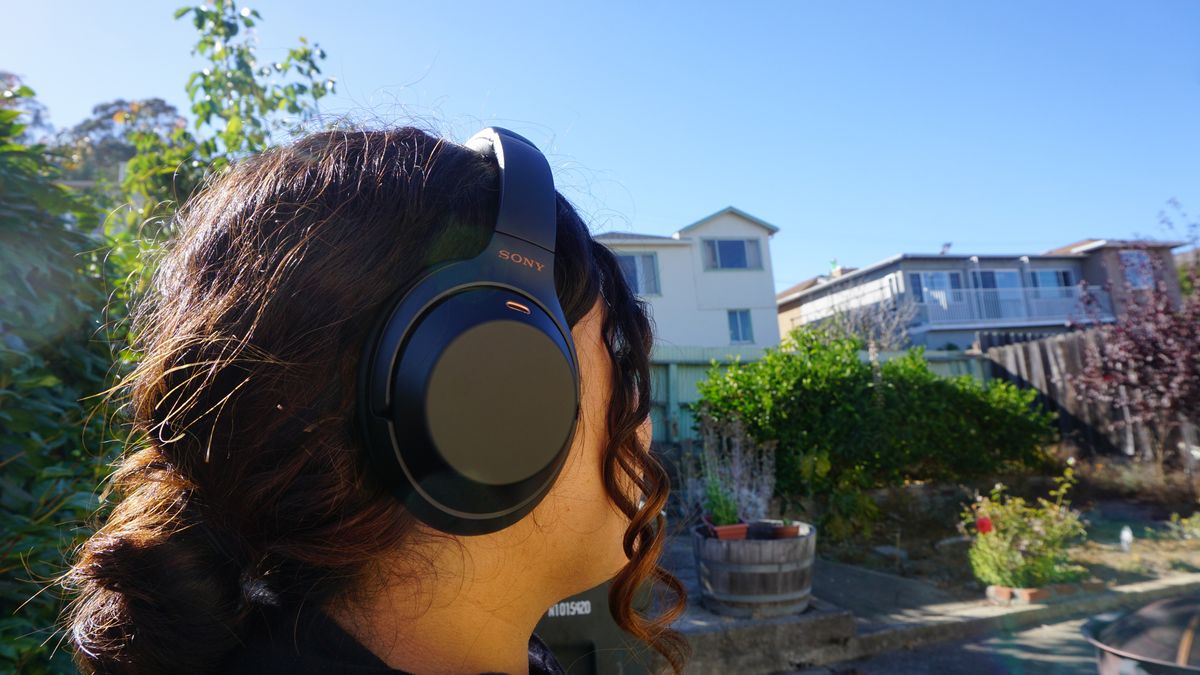TechRadar Verdict
While they’re not an all-out upgrade on the WH-1000XM2, the Sony WH-1000XM3 make a lot of subtle tweaks to an already amazing pair of noise-cancelling headphones. That's still true three years after they were released, even though they've been usurped by the Sony WH-1000XM4.
Pros
- +
Outstanding noise cancelation
- +
Fantastic sound quality
- +
Quick Attention Mode
- +
30-hour battery life
Cons
- -
Small tweaks from 1000XM2
- -
Mediocre call quality
Why you can trust TechRadar
The Sony WH-1000XM3 wireless headphones are a superb pair of noise-cancelling headphones. Even though they’re a few years old and they've been usurped by the Sony WH-1000XM4, they're still well worth buying.
Over the years, Sony has tried to perfect its headphones' audio playback and noise cancellation - and unlike many noise-cancelling headphones on the market, the Sony WH-1000XM3 don't just create a single sterile sound barrier, but multiple kinds that can adapt to whatever situation you’re in.
While this adaptability has been pushed ever further with the WH-1000XM4, that noise cancellation technology is one of the reasons the Sony WH-1000XM3 were the king of noise cancellation and the best headphones for two years running, until the WH-1000XM4 swiped the crown in 2020.
As such, the Sony WH-1000XM4s are the very best headphones you can buy right now – and they are a noticeable upgrade on the WH-1000XM3s - but that doesn't mean you shouldn't still consider the older Sony headphones.
Now that the XM4 are here, they're often discounted, making them a more budget-friendly option for those who want an excellent pair of headphones but can’t afford a high-end price tag.
- Try Amazon Music Unlimited with a FREE trial: US | UK | AU
- Read our Sony WH-1000XM4 review
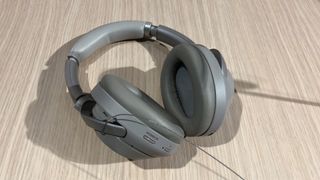
Sony WH-1000XM3 price and release date
- $349 / £300 / AU$499 at launched
- Discounts are available often
- Released in August 2018
The Sony WH-1000XM3 were announced at IFA 2018 and went on sale in August 2018.
Following in the footsteps of two previous 1000X models, the Sony WH-1000XM3 were the company's flagship headphones before the XM4 came onto the scene. They're feature-rich, as noted in the section above, and will sound like a premium pair of headphones should.
That said, because they have so many features, they’re going to be a bit more expensive than your average non-noise cancelling headphones: $349 / £300 / AU$499. That being said, they're often discounted these days, often available for much less than their original price.
Design
- Lighter than predecessors
- New padding along bridge
- USB Type-C port to charge
- Touch controls
Arguably the biggest changes to the Sony WH-1000XM3 compared to the XM2 are found in the design of the headphones: they’re lighter than the previous model and more form-fitting as well.
The headphones shed about 1 ounce (22 grams) off their predecessors' design. That might not seem like a big deal, but considering you’ll be wearing these for an extended period of time like, say, a transcontinental flight, every ounce helps.
The other design change is the new flush fit that changes out the old padding on the bridge for something a bit more cushiony. This makes these over-ear headphones more comfortable, and less dorky-looking when they’re on your head. Sony’s also deepened the earcup and changed out the silver accents on the side of the headphones for a stylish copper tone instead.
Finally, the Sony also swapped out the microUSB port on the right earcup for a more modern USB Type-C charging port.
Outside of these minor tweaks, these are still relatively minimalist headphones – which really appeals to the business-class customer Sony is targeting.
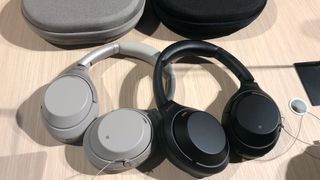
The Sony WH-1000XM3 come in only two colors – all-black or gray-silver – and beyond an engraved Sony logo above each earcup, are totally nondescript. These are designed to sound good and feel comfortable to wear – they're not flashy like Beats headphones.
Around the left earcup, you’ll find the only two buttons on the headset. There’s one for Power/Bluetooth and another to cycle the noise cancellation between its three settings: On, Ambient Mode and Off. Down below the buttons you’ll find an auxiliary jack, which is mirrored on the other earcup by a USB Type-C port that’s used to charge the headphones. (You’ll find a USB-to-USB Type-C cable inside the box, alongside a 3.5mm AUX cable, two-pronged AUX adapter and a hard carrying case.)
You can control your music playback by pressing or swiping the touch-capacitive ear cups. To skip forward, you’ll need to swipe right on the right earcup or swipe left to go back. Pausing is done by double-tapping, and you can resume your music with the same action. Similarly, turning the volume down requires you to swipe down on the right earcup, and turning it up is done by swiping up.
It’s a system that takes some getting used to, but once you use it for a week it becomes second nature.
Performance
- Strong noise cancellation
- Quick Attention Mode
- aptX and aptX HD support
- Little difference in audio performance
- Google Assistant integration
- Better call quality – but not great
Of course, what you’re buying a pair of noise-cancelling headphones for is their ability to effectively block out ambient sound. In that arena, there were none better than the 1000XM3 until the XM4 came along.
According to tests done by Sony, the 1000XM3 are four times more effective at cancelling noise than the 1000XM2 – an impressive feat considering how well the M2 performed.
In practice, that claim definitely held true when confronted with both low-frequencies, like the kind you’d find while riding a train or flying in a plane and in workplace environments where there’s higher frequency noises like people talking or music playing. In nearly every scenario the WH-1000XM3 performed admirably, often reducing noise from a disturbingly loud hum to a more manageable buzz – and sometimes eliminating exterior noise entirely.
Like their predecessors, the 1000XM3 are able to selectively allow some noises into the headphones as well. With Ambient Noise mode selected, announcements made over train station PA systems can be heard, while Quick Attention Mode allows you to quickly pipe in external audio without taking off the headphones by reducing the volume of the music and using the microphones located on the outside of each earcup. Since the launch of the XM3, this is a feature replicated by lots of headphones, including the AirPods Pro and the Bose Noise Cancelling Headphones 700.
While noise cancellation has enjoyed some solid improvements, audio quality remains similar to what we heard on the 1000XM2… which might have been more of a disappointment if the M2 weren’t such an impressive pair of wireless headphones in their own right.
The Sony WH-1000XM4 will sound a bit better while using an Android device that supports the aptX HD standard, but even on an iPhone they’re surprisingly great. Mids are straightforward, highs come through crystal clear and bass is weighty and can have some real slam to it. They really shine on a device that supports the LDAC codec – like, for instance, a Sony Walkman – but they’re by no means limited to those devices.
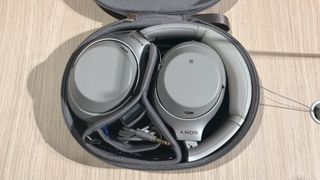
You can also summon Google Assistant or Alexa with a tap of the noise cancellation button, allowing you to ask either voice assistant questions. iPhone users can also activate Voice Assistant for Siri, which lets you control your smartphone by holding a finger to the touch sensitive earcups.
The last aspect of performance worth analyzing is the 1000XM3’s call quality. In several phone calls made with the headphones, the people we spoke to reported that we sounded clear – if a bit quieter – than if we had used the phone’s built-in microphone. This is likely due to the extra microphones Sony has embedded into the headphones themselves.
That said, while these headphones are fine for the occasional call or two they’re probably not what you’d want to use if you frequently make phone calls in an office setting – call quality isn’t as pristine on the 1000XM3 as it is on other business-ready headsets.
Battery life
- 30-hour battery life
- Quick Charge mode
- Auto-off mode through the app
So how long will these headphones last on a charge? There are a lot of factors but, after a few days of testing, we found a good benchmark to be around 30 hours or so. Over a period of four days while the headphones were being tested (five hours a day x four days) they didn’t need to be recharged at all, ending the final night at around 30% battery life remaining.
For comparison, that’s about 10 hours more than the Bose QuietComfort 35 when used wirelessly and 10 hours less than the Bose if used in wired mode. However you slice it, it's still more than enough juice to get you across the Atlantic and back if you’re travelling to the UK from the West Coast of the United States.
Should you find yourself running low, there’s no need to worry – the 1000XM3 has a “Quick Charge” feature that allows you to get around 5 hours of playback after only 10 minutes of charging. In putting that claim to the test, we went from around 30% battery life to 50% after exactly 10 minutes connected to the wall. Claim verified.
Should you want your headphones to last a bit longer, you can use the Sony Headphones Connect app to shorten the time it takes for the headphones to go to sleep. The default is 15 minutes, but you can reduce that number down to five minutes if you really want to wring every second of life out of them.
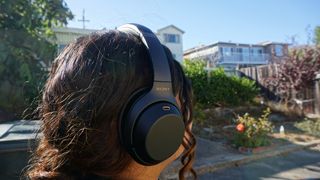
Final verdict
The XM3 are yet another impressive pair of noise-cancelling headphones from Sony. To wit, the Sony WH-1000XM3 are exactly the headphones we’ve come to expect from the new leader in noise-cancelling headphones.
Even if they’re a bit too close to the XM2s for comfort, they're still among the best headphones you can buy nearly three years after they were released, only being pipped by the Sony WH-1000XM4.
That being said, you could save some money by picking up the Sony WH-1000XM2 – they’re nearly as good and now even less than they were before thanks to a recent price drops.
- Here are the best wireless headphones you can buy
- Sony WH-1000XM4 vs Bose Noise Cancelling Headphones 700: which over-ears are best?
Nick Pino is Managing Editor, TV and AV for TechRadar's sister site, Tom's Guide. Previously, he was the Senior Editor of Home Entertainment at TechRadar, covering TVs, headphones, speakers, video games, VR and streaming devices. He's also written for GamesRadar+, Official Xbox Magazine, PC Gamer and other outlets over the last decade, and he has a degree in computer science he's not using if anyone wants it.
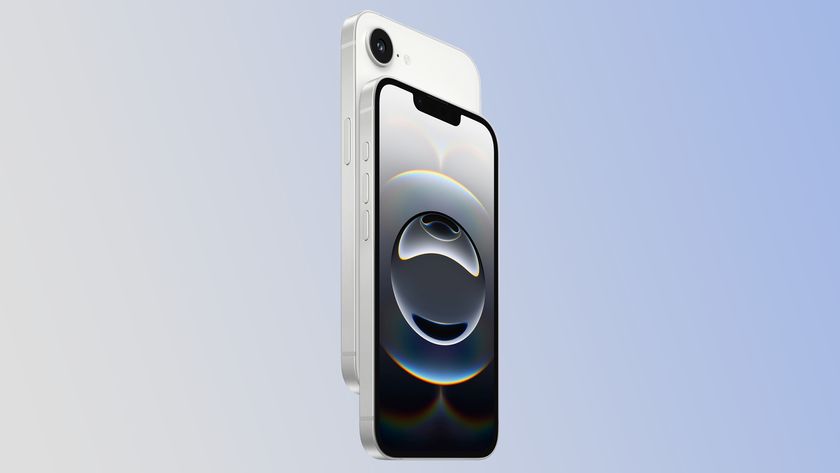
iPhone 16e launch: Apple discontinues iPhone SE, iPhone 14, and iPhone 14 Plus

Everything new on Hulu in March 2025 – including Sean Baker's Oscar-nominated drama Anora
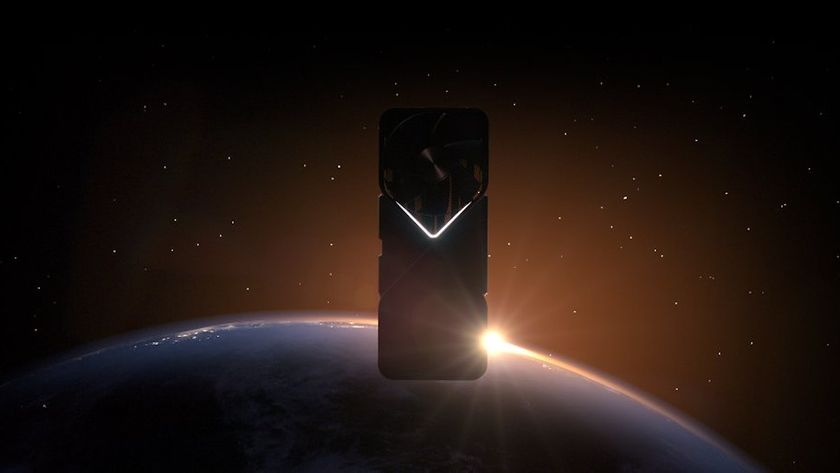
Nvidia's RTX 5070 Ti looks like the go-to GPU this generation, if you can find it at retail price - benchmarks and reviews suggest its almost as good as the RTX 5080
Most Popular



